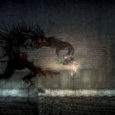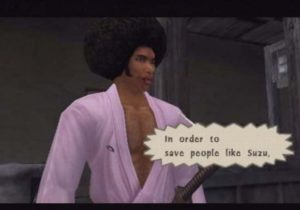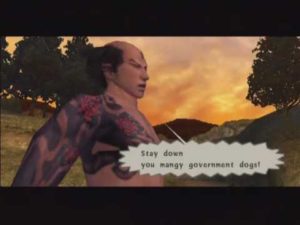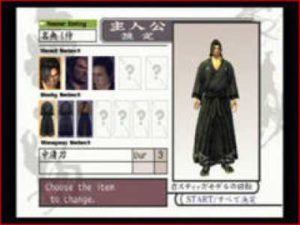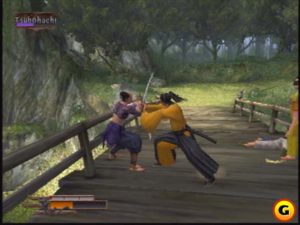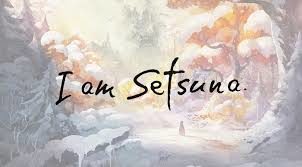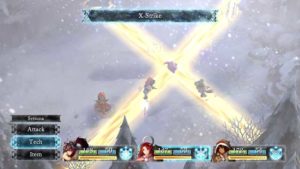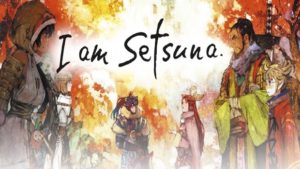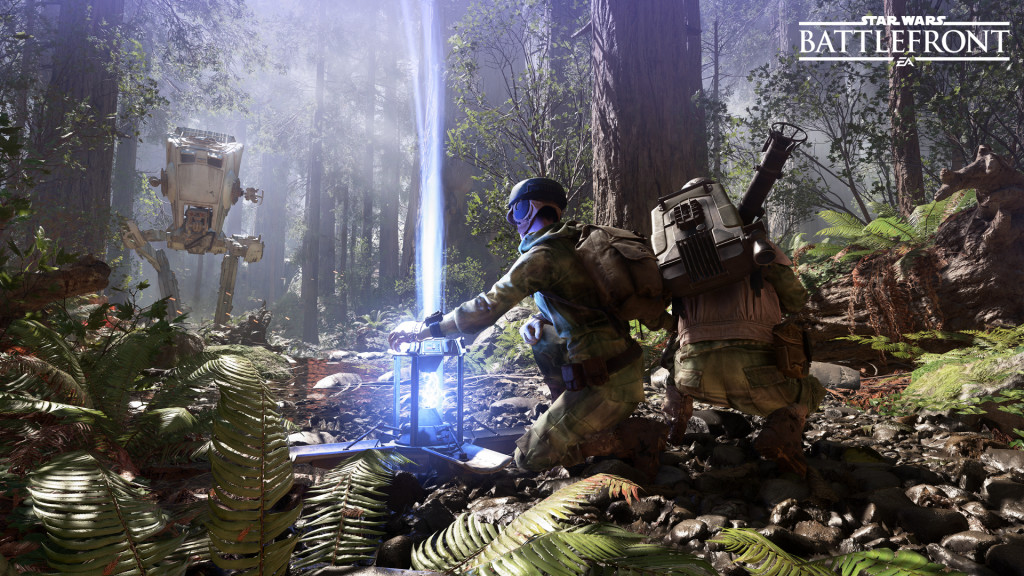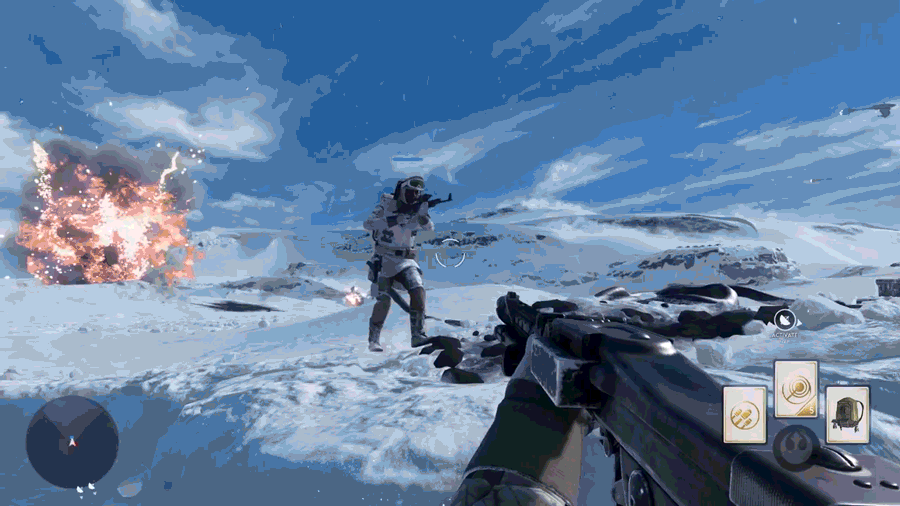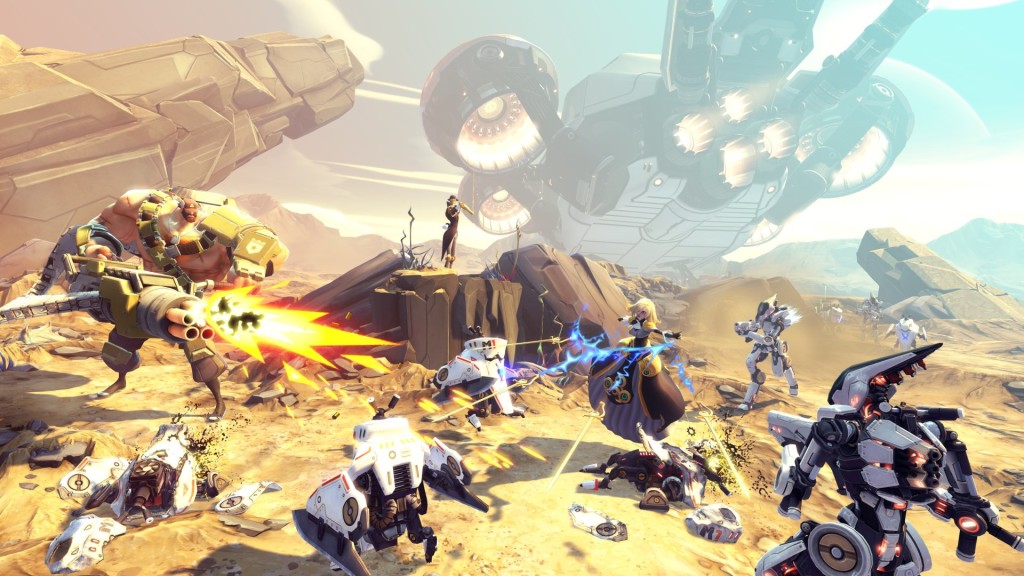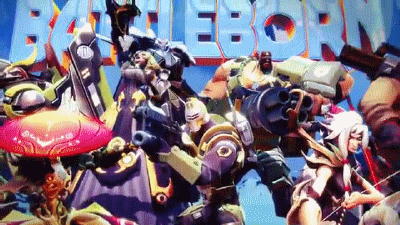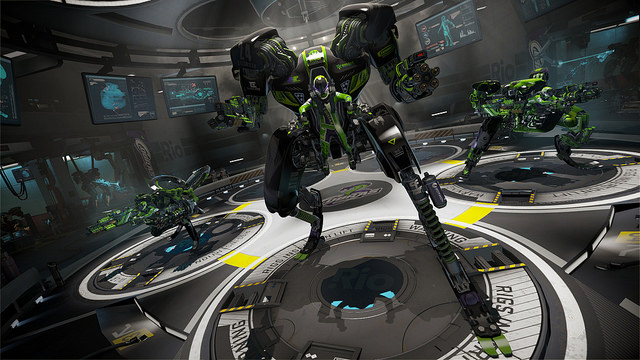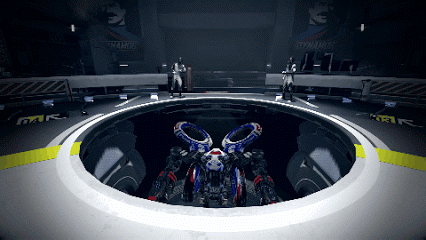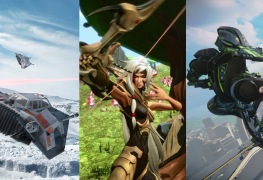Of the three games I’ve been given the opportunity to review in the past two weeks, Downward Spiral: Horus Station was last on the list for one very particular reason: Looks. But, as I’ve learned, beautiful games can be terrible (Star Wars: Battle Front, anyone?), and even the most coarse of games can be incredible. Despite my initial bias, I opened my mind, and my heart, to Downward Spiral: Horus Station.
From developer 3rd Eye Studios, Downward Spiral: Horus Station is an innovative and seamless VR experience.
Taking players through an abandoned vessel, the game focuses on visual storytelling for single player or two player online co-op. Using their wits, players will have to piece together the mystery based on observation and interaction all while accompanied by the electronic ambient soundtrack composed by platinum selling HIM frontman, Ville Valo.
For the first few hours with this game, my time was spent try to get the hang of the two separate game modes, as Downward Spiral: Horus Station plays in both a VR mode and Normal mode. It needs to be said again, that without a doubt, this game absolutely needs to be played in VR. The attention to detail in a deep space setting is entrancingly realistic, and just like movement in a zero gravity environment, the player is expected to grab handrails or shove yourself off walls to propel your body across a room.

On the opposite end, Normal mode makes the game almost impossible to play. Even after turning mouse sensitivity up to maximum, the look speed is too slow to react to threats, look around naturally, and the max is about 15 degrees a second. Though the slower movement speed makes sense in a interstellar environment, look, grab, look, shove shouldn’t take upwards of 10 seconds of play time.
Environmental and object interaction is equally innovative or utterly frustrating, depending on if you’re in VR or Normal modes, as the physics involved are the same. I noticed at times in Normal mode when entering a compartment of the station at a different orientation to the previous, there exists no mechanism to reorient yourself to that room, adding another layer of difficulty to movement, and the extra punch of disorientation.
As it turns out, the VR mode was my preference, as you can grab surfaces, reorient yourself, and launch off again in a matter of seconds. It forces gameplay at a slow and methodical pace through levels that adds tension and gives a sense of pride as you progressively learn how to best manipulate your momentum in each confined space.
The soundtrack by Ville Valo utilizes an 80’s sci-fi ambiance that swells and adds a consuming intensity at appropriate moments to your surroundings. With an unexpected direction to the sound design and silent narration, the enthralling aspect of Downward Spiral: Horus Station is in the feelings of anxiety and apprehension as you navigate your surroundings in deep space.
Though Downward Spiral: Horus Station can at times have no clear sense of direction of plot or story past going forward and figuring things out for yourself, and even then generally by accident, the sense of urgency in VR mode of Downward Spiral: Horus Station is immersive and entrancing. Downward Spiral: Horus Station was made for VR, or rather, VR was made for this game.
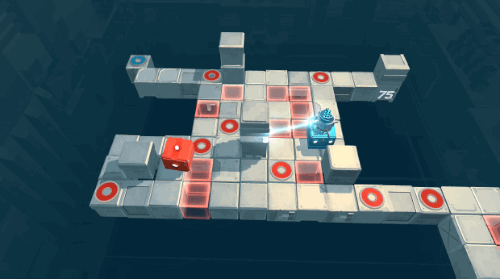
Death Squared, a cooperative puzzle game where players guide defenseless robots through a series of mazes filled with deadly traps, will come to PlayStation 4 in 2017 simultaneously alongside the previously-announced Xbox One and PC versions.
The PlayStation 4 version will receive exclusive levels, robot skins and silly controller features to distinguish itself from the Xbox One release, which will have exclusive levels of its own.
Danger lurks around every corner in Death Squared‘s series of intricate puzzles. Teams of two or four simultaneously and individually guide robots to their respective color-coded waypoints, and all must reach the end for the group to achieve victory.
At its core, Death Squared is about communication and experimentation. One false move can trigger hidden hazards and the fun is learning each stage’s “rules” through trial, error and cooperation. Instantaneous respawns help players put newly-gained knowledge about a level’s pitfalls to quick use.
With an emphasis on teamwork, Death Squared is best enjoyed as a multiplayer experience. Solo players and parties of two can play through the story mode, while more chaotic stages await groups of four with specially-designed “party chaos” challenges unseen in the main campaign.
“The reception to Death Squared has been amazing from groups of all sizes and skill levels,” said Patrick Cook, lead designer, SMG Studio. “It’s been a lot of fun to watch the many different groups of players approach our puzzles. Every team has its own dynamic. Strangers at conventions start high-fiving, couples have an equal share in a level’s success. I think everyone can get behind comradery in the face of adversity.”
Death Squared will be at RTX Sydney for hands-on sessions with all-new stages. The game will also be playable at PAX South, where SMG Studio will debut PlayStation 4 and Xbox One-exclusive levels, as well as story sequences featuring the vocal talents of Mick Lauer.

In every gamer’s career there comes a game that may not look the prettiest, be the most mechanically sound, or even review very well that just lands with them in a way that it is never forgotten. For me, Way of the Samurai on PS2, developed by Acquire and Spike is that game. It is easily the one game I have spent the most hours on of any game that I have ever played. The experience runs that deep in my gamer blood.
Way of the Samurai came out in 2002 and was published by BAM! Entertainment, a company who is no longer with us. This experience spawned an entire series that still had entries all the way up until 2012 with Way of the Samurai 4 on PS3. While I have played every entry in the series, I still found the very first game to be the best one.
Way of the Samurai plays like a choose your own adventure novel. The story takes place in 1878, shortly after the fall of the historical Tokugawa Shogunate. This has us slapped dab right in the middle of the Meiji period during the Satsuma Rebellion, which was the era of great change for the entire country. The rise of firearms and Western style armies are on the rise as the days of the Samurai are in its final moments. It was truly a paradigm shift which makes for brilliant setting for the things to come in this game.
You take the roll of a ronin (wandering samurai) who strolls into the fictional outpost town of Rokkostu Pass. This place is a small populated village that is adjacent to a railroad track and iron foundry. The Pass is under competing control of two separate samurai clans who have dueling agendas that put the people of the Pass at peril. Word has it around town that the government forces have a massive army that are taking control of the country by usurping samurai warlords that rule the areas. This army is large, well-armed with modern (for the time) weaponry and seemingly unstoppable.
One of the factions in Way of the Samurai is the Kurou family, a clan who previously ruled the Pass through extortion and intimidation with no competition. This family is deciding whether or not to continue fighting against the government forces or fold to their desires and sell the iron foundry to them and cease the battles in exchange to remain in control of the Pass.
The second samurai faction is the Akadama clan, who’s leader is the illegitimate son of the head of the Kurou family. They know that selling the foundry to the government will be the nail in the coffin for the government to control the area and will do anything in their power to stop the transaction from happening. Of course caught in the middle of this struggle are the townspeople who are suffering and victimized by both clans and their struggle with the government forces.
When the game starts, you arrive in the pass and stroll upon a bridge. You know nothing about any of the things I listed above, and have no context to the world around you. You are nothing but a wondering samurai who is about to make a series of choices that will send him on multiple different paths of allegiances and betrayals.
With 7 completely different endings you will find yourself replaying this game while carrying knowledge form your last play through into the next game which will influence your decisions as you navigate your way to a new ending. The game does not take long to beat, a speed run could take only 45 minutes while a full play through could last 4 or 5 hours. How long you linger in the Pass is completely up to you. You can even walk away from the fight entirely and end things on your own terms.
Leaving early actually works as a great way to collect swords. As you beat the game, or leave the Pass early, you take your swords with you and can use them at the start of every new game. With every completion and event down you will get new customization pieces for your avatar as well .This includes hairstyles, body types, and accessories.
Dying with your swords during a play through will have you dropping them, and losing them forever. You can visit the blacksmith during your play through and enhance your weapons but again if you die, you will lose them forever. It is always good to just leave the Pass early and end your current play through just so you can salvage your weapons if you think you won’t be able to make it to the end. Upon completion of a play through your swords, enhancements and all, will be found in your weapons locker to choose upon your next visit to the Pass. This creates a gameplay loop that is so satisfying.
The challenge in Way of the Samurai is real when you up the difficulty on your play through. Higher difficulty levels promises better weapon drops, and as you enhance those weapons you form a real bond with your swords. Swords come in many differently fighting styles as well each with their own animation set. Fall in love with your creation and hope you don’t lose it to a boss enemy or a swarm of angry sword wielding fiends.
Let’s go back to that bridge on the first day of the ronin’s arrival. The first thing you come across is a scuffle on the bridge. Members of the Akadama clan are hassling a woman from the town who works at the restaurant. As you come on to the bridge you have your first choice of many, do you act as the girl’s savior, join in and help the samurai mess with the girl, or do you just ignore the situation all together? Each choice sends you into branching narrative paths that comes to crossroad events as the characters are woven together into a choose your own adventure like tapestry.
What decisions will have you aligned to which factions? Will you turn on your own kind and side with the government? Is siding with either Samurai faction really the best? How about aligning yourself with the townspeople? How about aligning yourself with one, only to betray them later and join another? Every single one of these are an option, and the game really insists that you discover all the pathways so you can get the full perspective.
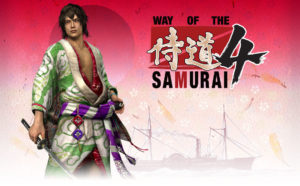 The gameplay for Way of the Samurai may not be as tight as other games like God of War or Ninja Gaiden. Graphics are hardly as good as they should have been at this time, and the revisions for this game were everything but generous here stateside. All these things don’t matter to me though. I think the controls are serviceable enough and the real thing I identified most with was the setting and the choose your own adventure type model. The idea of collecting swords was as addicting as catching ‘em all in Pokémon.
The gameplay for Way of the Samurai may not be as tight as other games like God of War or Ninja Gaiden. Graphics are hardly as good as they should have been at this time, and the revisions for this game were everything but generous here stateside. All these things don’t matter to me though. I think the controls are serviceable enough and the real thing I identified most with was the setting and the choose your own adventure type model. The idea of collecting swords was as addicting as catching ‘em all in Pokémon.
It is my ultimate guilty pleasure and I implore you all to try and track down a copy or at least play the fourth instalment on Steam or PS3. If you are a giant fans of Japanese history and Samurai in general, than look no further than this ultimate samurai simulator.
Calling back to PlayStation one classics like Silent Hill, Back In 1995 is a throwback to the survival horror and mystery games of the original PlayStation and does its best to faithfully re-create everything from this all-but-forgotten era of games.
Be transported to a world both concrete and indistinct, where you must uncover the mystery surrounding the disappearance of your daughter, the catastrophe that shook the city, and why you’ve decided to finally return.
Back in 1995 was created as a labor of love by indie developer Takaaki Ichijo as a means to replicate the unique feeling he had from his first gaming experiences: the PlayStation and the Sega Saturn.
Star Wars Battlefront
It’s basically Battlefield 4 with a skin of Star Wars on top. AT-ATs are on rails. There’s no space battles.
Those are all completely valid criticisms of DICE’s Star Wars Battlefront game. That being said, it’s also fun as hell.
The demo plopped two people down in a sort of objective-based wave killing mode in which you’re two rebels fighting off waves of Storm Troopers while trying to complete missions. We were skeptical at first, but once we were in the game taking down Imperial scum, we knew we’d be getting it. The combat feels fluid and the environments are gorgeous. The planet we were on appeared to be Tatooine with its desert motifs and high cliffs. Even just looking across the valley we were stationed in looked gorgeous.
Then the Troopers came. And as quickly as they came, they were gone, banished by our blasters. First wave down, no biggie. Hell wave two came and went almost as fast. Then more heavily armored troopers were introduced and we were still okay. Then a walker with the troops and we actually had to start using our abilities. First off, the jetpack is incredibly fun. Getting a huge, fast boost up in the air in these terrains is an absolute joy and one we’re happy to have. It’s just so much fun bouncing about through the valley it’s hard to focus. There’s also a shield for deflecting blaster fire while you try and make a getaway. The valley also spawns random powerups from a group shield to a sniper rifle, encouraging you to do more than just hole up with your partner. After six waves and many dead Storm Troopers, we made it out alive and with far more enthusiasm about this game than we came in with. Though it may not be Battlefront 3 we were all hoping for, it’s still a really enjoyable experience. The gameplay is solid, fast paced, and a hell of a lot of fun.
Battleborn
We didn’t know much about this game coming in to it aside from what we gleaned from the statues by their booth — it had a giant man with a teeny tiny head in it. On the last day at the last possible time we could, we hopped in line and got to be one of the last groups of E3 2015 to try the game, which is pretty damn cool.
Battleborn is a new FPS game made by the people behind Borderlands. As you’d expect, there’s a multiplayer cooperative story mode in which you and three friends pick characters and go through missions together . The main difference between this mode and Borderlands are the amount of characters to choose from and the variety of options with those characters. Each of the 24 characters characters has their own unique abilities and play style. Instead of focusing on massive amounts of loot, players don’t pick up different guns, but instead shards with which they can upgrade their characters. This shift makes character selection much more important as all you’ll really have are the characters abilities and your upgrades. The graphics are also not in Borderlands pseudo-cel-shaded style, but rather something more akin to TF2 with its cartoonish, smooth style. The characters are also supposed to represent tropes from the FPS genre from military testosterbros to wee, but powerful dwarf warriors.
There’s a story for this game, but honestly, unfortunately for 2K, they were right next to the EA booth and we couldn’t hear anything the characters were saying over blaring bass. Hopefully it’s as clever and interesting as the Borderlands dialog. Though we couldn’t hear the story, we did get to experience a really fun multiplayer mission in which four of us fought some spooky looking demons. The demo level was fun to navigate and it was great fun hopping in with strangers, all of us figuring out our cool abilities, and taking down baddies with great prejudice.
Battleborn isn’t just a co-op game, however, as it also has various multiplayer modes. One such mode that has been shown off already is called Incursion, and looks an awful lot like a MOBA in structure, adding to the argument that this isn’t just reskinned Borderlands. Gearbox has promised more modes by the time the game releases this year, so we look forward to seeing what this new game can offer when we get our hands on it.
RIGS
The most surprising demo we got to try, we didn’t even know was in development until this show. RIGS is Sony’s competitive gaming title for its upcoming VR platform Morpheus. It’s a 3v3 objective-based FPS in which the goal is to accumulate a enough energy to throw yourself through a hoop and score a goal. You get energy by finding it throughout the map or by killing your opponents. There are three classes all with different attributes that you can choose from, all with their own attributes and abilities. The one we picked had a hover ability that proved quite annoying for the team to have to look up to aim. Hehe, suckers.
The VR part is interesting. Instead of aiming with the right stick, you have to look at your target to aim. Upon first hearing this, we were skeptical of how it well it would work, but it was surprisingly intuitive. Once you realize you only see more of the map by moving your head, it’s already natural to be moving your head to stare at the enemy, so you just need to keep it there to keep firing at them. The only bad thing about this aiming system is that if they start moving, you also need to be moving to keep your target on, so it’s actually not terribly difficult to get out of your opponents line of fire. Luckily, it’s that way for everyone so although it’s harder to keep a lock on your target, it’s also harder for them to keep a lock on you.
RIGS was only allowed to shine, though, because of all the VR headsets we’ve tried, the Morpheus was by far the most comfortable. To be fair, we’ve only tried various iterations of Oculus Rift, but that terrible elastic strap on the back makes the whole thing feel uncomfortable. Morpheus, on the other hand, has a piece that extends and contracts to allow you to slip it over your head, kind of like headphones. The padding is a lot softer, it feels more secure, and the experience of taking it on and off feels so much better than Oculus Rift that it’s incredible. The VR itself is also pretty good with very minimal screen door effect and a 120 Hz refresh rate, which should help a lot of people with their VR motion sickness.
If you have PS4, Morpheus is awesome and RIGS is a really great game to show off what it can do. Look forward to both sometime in the future because lol what’s a release date.


